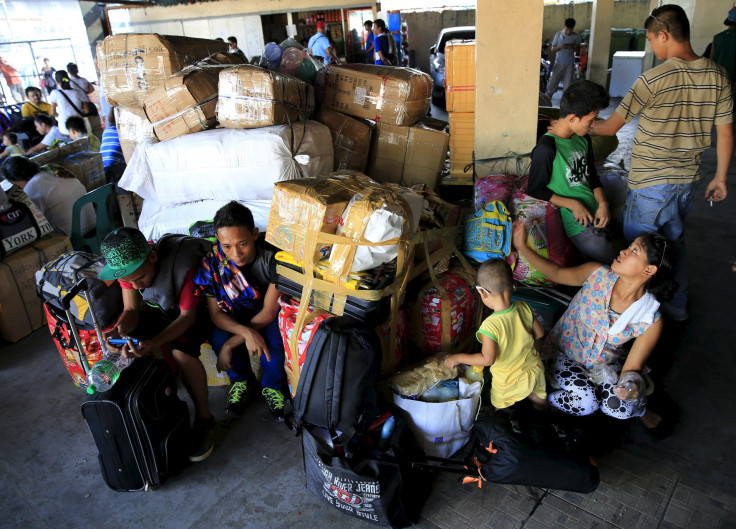Typhoon Noul Lashes Northeastern Philippines, Leading To Landslide Warning

Typhoon Noul crashed ashore the northeastern tip of the Philippines Sunday, as officials warned of landslides and called on residents along the coast to evacuate to safer ground. The Category 5 storm packed winds of as high as 115 mph near its center, with gusts of even greater magnitude. It made landfall in the rice-producing province of Cagayan about 250 miles north of the capital Manila, the weather bureau said.
Power was cut in Tuguegarao City, the capital of the province with about a million inhabitants. The typhoon is expected to move northwest and head toward southern Japan Tuesday.
“We strongly advise pre-emptive evacuation while we still have time, and we expect there will be a confluence of events -- a high tide, heavy rainfall in the mountains, the possibility of a storm surge and strong winds,” Alexander Pama, head of the national disaster agency, said at a news briefing before the typhoon hit land.
The typhoon was expected to trigger landslides and flash floods in parts of the Cagayan Valley, the weather bureau said, adding that heavy to intense rainfall was likely within the typhoon’s 60-mile diameter.
More than 5,000 passengers and about 100 vessels were stranded in ports Saturday, mostly along the eastern seaboard. Airline Cebu Pacific canceled at least six domestic flights to the northern Philippines.
Officials in northern Philippine provinces have alerted rescue units and positioned relief goods. The government readied trucks to ferry people away from low-lying and flood-prone areas.
An average of 20 typhoons cross the Philippines each year, with the storms becoming fiercer in recent years. More than 8,000 people died or went missing and about a million were made homeless by Haiyan, another Category 5 typhoon that struck the central Philippines in 2013, bringing storm surges higher than 15 feet.
(Reporting by Rosemarie Francisco; Additional reporting by Neil Jerome Morales and Manny Mogato; Editing by Alex Richardson and William Hardy)
© Copyright Thomson Reuters 2024. All rights reserved.




















